«The Kidditorial originated from our desire to reach out to children and parents during and after the pandemic, and communicate online content through Axel Scheffler’s all-too-human illustrations that reflect children’s formative experiences and memories about the crisis, offering them new information and hopefully some enjoyment as well”.»
Ulf Schmidt & Blanche Schwappach-Pignataro — Hamburg 2021
In the autumn of 2020, I received a handwritten (and Gruffalo-decorated) letter from Axel Scheffler. Three months earlier I had moved from the United Kingdom to Germany as a newly-appointed Professor of Modern History at Hamburg University. Scheffler had seen an article about the move that I had published in the Guardian and wished our family good luck on the continent. We quickly realised we had much in common, having both lived in the United Kingdom for much of our lives, grown up in Hamburg, and studied history. The Corona pandemic had once again forced societies in Europe and elsewhere into various forms of lockdown, and I hatched the idea for this exhibition – in both its physical and digital format – together with Professor Blanche Schwappach-Pignataro, the dean of the University Clinic Hamburg-Eppendorf (UKE).


The effects of the pandemic on children and adolescents deeply concerned all three of us. We felt that there was a lack of engagement with, and public discussion about, children and their individual experiences at various points in the crisis.
The immediate health risks for children were deemed to be significantly lower compared to other age groups – but what about their overall health and wellbeing? How did they cope at home and in schools, many of which turned out to be unprepared (and underequipped) to move to online teaching? What about children’s sense of stability and routine, which was challenged to varying degrees in households up and down the country? Was this not worth talking about? We wondered whether narrating the subject with artistic images might offer an opportunity to engage both children and adults with such questions. Within days we were having regular email exchanges about the possibility of staging an exhibition using some of Axel Scheffler’s illustrations on the subject, which he had created for a book entitled «Coronavirus», produced by Elizabeth Jenner, Kate Wilson and Nia Roberts.

The book had been rapidly produced and was made available free of charge in various formats. In addition, Axel Scheffler had made drawings about the creative coping mechanisms of people, young and old, during the pandemic. Being the man that he is, he readily agreed to place all of this material at our disposal – again free of charge – so that we could stage an exhibition in Germany.
But where could we exhibit? Who would be willing to stage such an exhibition at such short notice? The three of us felt that we did not have the luxury of years of preparation for this project.. It needed to be done sooner rather than later, in a welcoming exhibition space where children could approach the subject at their own pace. Alternatively, they should be able to access it online, where they would find additional (scientific) information about questions that concerned them. For example: What is a pandemic? What is a virus? Are there other viruses besides the Coronavirus? Why do we need to keep a distance from each other, wash our hands all the time, and wear masks? All of these questions were (and continue to be) highly relevant in the ongoing pandemic, not just for children. Answering them requires the combined efforts of experts across different disciplines, ranging from medical science and public health to cultural studies and medical history.
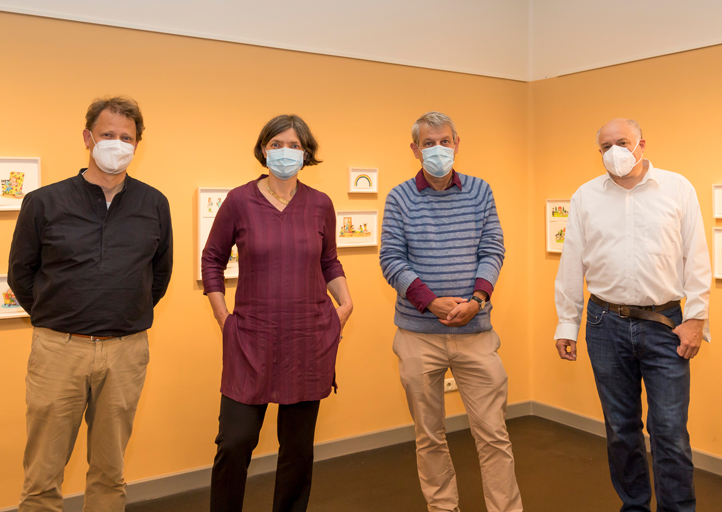
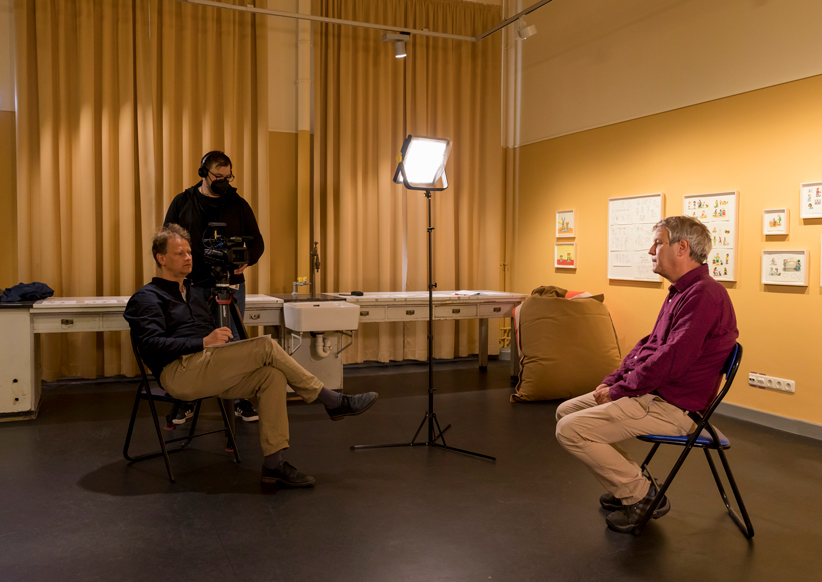
As so often in life, we needed a bit of luck. We decided to put out a call to Professor Philipp Osten, the director of the Medical History Museum Museum at the UKE, to see if he would be interested in and able to support such a project. We didn’t hedge our bets. Exhibitions, we knew, were often planned years in advance and required resources, personnel, and organisation. Would it be possible to squeeze us in? The response we received could not have been better! Osten and his team, as it turned out, were in the middle of preparing a major exhibition on «Pandemic: Retrospective Perspectives of the Present» and were genuinely excited to incorporate Axel Scheffler’s illustrations into the exhibition in a specially-designed children’s room.
This solved the question about the physical exhibition. But what about the digital format? One of our aims was to make the drawings accessible to children through modern technology. Nobody knew how long the pandemic would last; indeed, we still do not know. When would it be possible again to travel to the museum in Hamburg? Children and their parents, we thought, ought to have access to Scheffler’s images and drawings everywhere, and be able to participate in the narrative of “how corona came to visit”. What is more, children needed to be taken seriously in their curiosity to learn and find out more about the pandemic and its historical antecedents. To this end, we needed the expertise of people engaged in creative forms of digital communication with different audiences of all age groups. We found those experts in Mario Kunze and his team at ZumKuckuck, who had previously developed an innovative “digitorial” for the Städel Museum, Frankfurt am Main.
Through monthly progress meetings, all online, we developed the conceptual framework and content for the “kidditorial”, as we came to call it. Some of the challenges were formidable: the narrative structure needed to be easy to follow and clear; the content, we felt, should convey an overall optimistic message through an emphasis on being “with one another – for one another” (Miteinander – Fürneinander); children needed to be able to navigate the digital space without the help of others, and an additional information level was to provide answers to potential questions.
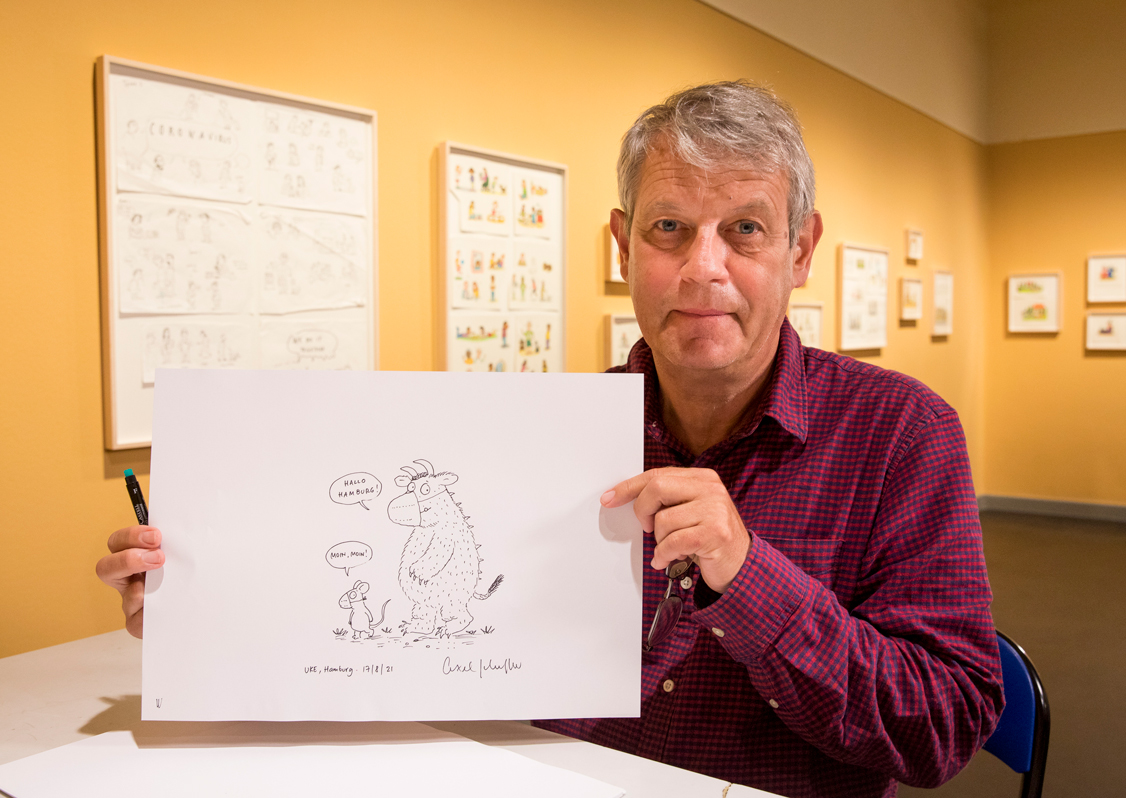
We hope that you find this online exhibition to be not only informative, but also enjoyable. The experience of Coronavirus has deeply impacted all societies across the globe, and we hope that by sharing our experiences we can realise the true meaning of «With one another, for one another, we protect each other!»
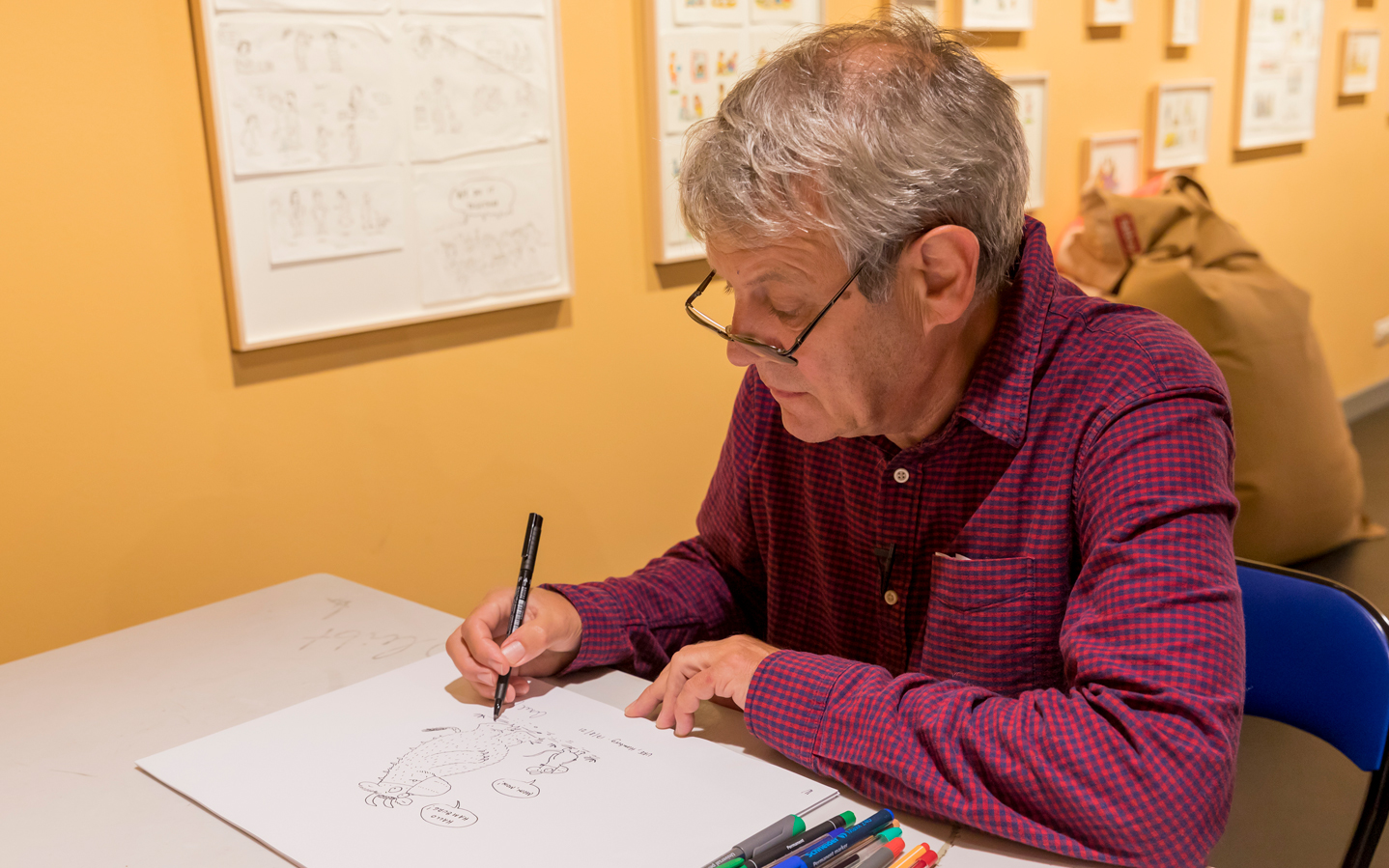
Axel Scheffler is an award-winning, internationally acclaimed illustrator who has illustrated some of the most popular children’s books. His books have been published in many languages and his work has been exhibited all over the world. He was born in Hamburg where he spent his childhood. As a young boy, he enjoyed drawing a lot, and when he finished school, he knew he wanted to do something with art. He studied in the United Kingdom and decided to stay. He now works as an illustrator.
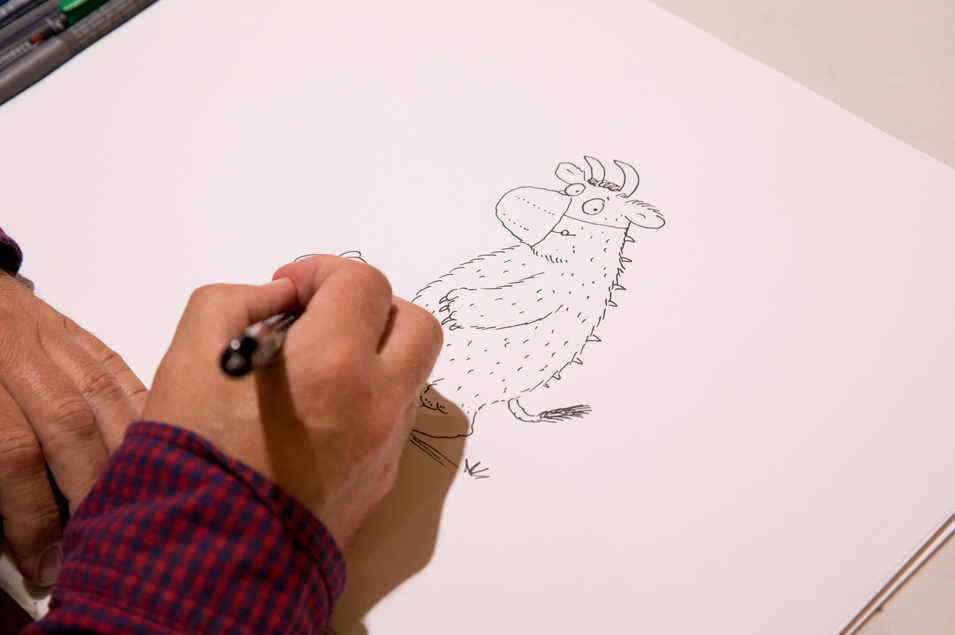
Axel Scheffler talks in an interview about the origins of the Corona book.

Medical History Museum, Hamburg
Pandemic. Retrospective Perspectives of the Present
September 2021 - September 2022